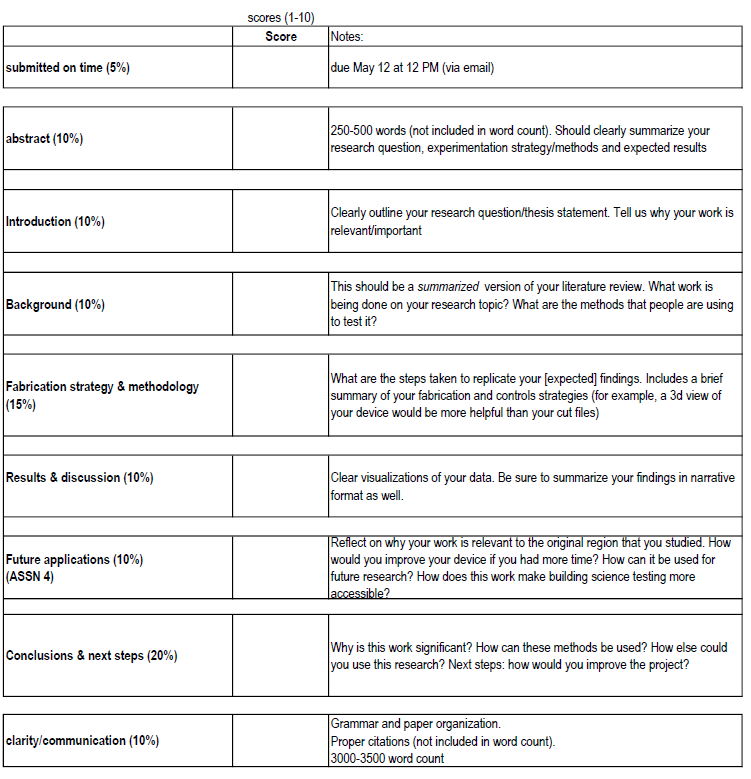Final Presentation (May 10, 2-4:30 PM)
Storrs Salon
Your presentation should largely follow the same format as your previous presentations. Each student will have 20 minutes, so try to keep your presentation at or under 10 minutes. Here's a rough outline that you could follow:
Guest panelists:
- Introduction (start broad - don't get into too much detail too quickly)
- Background (summary of your literature review, description of the region you're testing for)
- Research question and hypothesis (tell us also why your work is important/relevant)
- Fabrication process (enclosure, electronics, assembly, etc)
- Methodology (be fairly general here. You will go into more detail in your paper. A good diagram will be extra helpful here!)
- Results (lovely graphs/visualizations! Be sure to title them and include a small description of your findings)
- Design Proposal (ASSN 4 - how are you putting these results to work? How can you tie it back to your original region of study?)
- Reflections/conclusions (next steps, future work, what you learned, etc)
Guest panelists:
Final Paper (due May 12, 12 PM by email)
Your paper should follow the same general format as the journal papers that you read at the beginning of the semester. Additionally, it should use the same general outline that you use for your presentation. Note that 60-70% of your paper should already be written already, but you'll want to clean up that information, summarize your literature review, and synthesize your thoughts into one cohesive document. Word count is 3000-3500 words, not including the abstract and bibliography. Be sure to include proper citations and pictures are welcome! If there is extra information that you want to include in your paper, you may include an appendix, but not not feel the need to document every single thing you did this semester - that is what the website is for. The paper should be a concise synthesis of your work. There is no specific format for this document, but please submit your document in PDF format (by email). See the grading rubric below as well as sample papers from previous years.
|
Papers from previous years: (for reference only - note that this was a slightly different course) |




